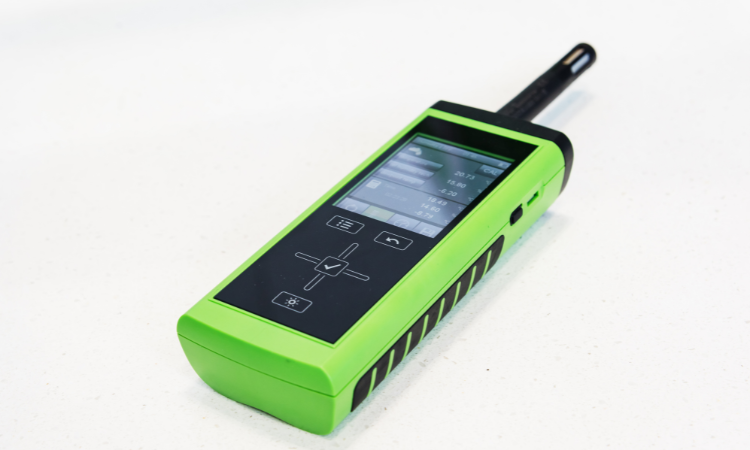Many industries across the country use data loggers, such as agricultural research, food safety, pharmaceutical storage, chemical industry, environmental protection, and more. Temperature and humidity recorders, analyze and record the temperature and humidity of food, medicine, and fresh items during storage and transportation. As Technology is advancing, our lives are becoming more and more dependent on new technologies like Earth Resistance Testers and data loggers. Now, Data Loggers also come in various types. So, before buying one, know the types and importance.
Here are the various types of data loggers available in the market.
Paper Data Logger
The paper temperature and humidity data logger directly records the collected temperature, humidity, and other data on the paper. So, paper data loggers require consumables such as recording paper, ink cartridge, pencil, etc., when recording. Paper data loggers use mechanical recording pens to write curves on the recording paper for the purpose of recording and saving data. The paper data logger is more cumbersome and larger than the electronic data logger.
According to the values and curves on the recording paper, it is necessary to check the recorded data through, and only a rough trend change can be determined. Moreover, because of its mechanical transmission structure, the paper data logger must be equipped with a few functions, such as alarm output, and there can’t be too many input channels, so it’s rarely sold in the market.
Paperless Data Logger
The paperless data logger does not require paper and is equipped with a microprocessor, display screen, and memory. The memory stores the information in a paperless data logger. Display modes include digital and graphic, as well as color, black and white, and blue screen. You can also use it without a display screen, such as a disposable U disk temperature recorder or button temperature recorder.
With the advancement of computer and Internet technology, paperless data loggers have quickly occupied the market with their more accurate data recording, convenient data storage, and convenient data analysis functions. In addition, an integrated USB interface greatly simplifies the downloading and saving of data from the paperless data logger.
RS485 Temperature Data Logger
It sends measurement data through the Modbus protocol through the data logger. Since the signal transmitter and the external environment do not affect the signal transmission, this data logger is more stable than the wireless data logger. As a result, it is widely used in some fixed places that require high humidity and temperature data. There are numerous uses for the RS485 data logger, including production workshops, laboratories, server rooms, pharmacies, and other places that need long-term monitoring.
Wi-Fi Temperature Data Logger
Wireless data loggers transmit temperature and humidity data, store the data on their own devices, and upload data to the network in real-time. Since the equipment uses wifi to transmit the signal, you can reduce the construction volume. And you can avoid wiring errors due to the use of wifi as the signal transmission medium.
Each workshop should have the collection of various temperature and humidity data to ensure a comfortable working environment. After this, you should forward the data to the monitoring facility. A wifi data logger will work best.
USB Temperature Data Logger
For the transportation of frozen and refrigerated foods over long distances, it is critical to proving that the goods have been kept in the specified temperature and humidity conditions at the time of receipt. If a dispute arises, the solution is to put a USB data logger in the cargo compartment when shipping. Throughout the transportation process, it will record the temperature and humidity changes, so the carrier will know who is responsible. You can monitor the data of a USB temperature logger during the storage and transportation of food, pharmaceuticals, chemicals, and other products.
Bluetooth Temperature Data Logger
It uses the Bluetooth communication protocol to write the working parameters and read the temperature data to the temperature data logger. Bluetooth temperature data loggers communicate with mobile apps. You can view the data and upload it to the network platform. In addition, you can print temperature and humidity data and curve charts anywhere, anytime, with the mini Bluetooth printer.
GPRS Temperature Data Logger
The GPRS data logger is a recorder that can save and analyze recorded signal changes. It uses GPRS as a communication medium to analyze and record data.
In comparison with traditional wired recorders, GPRS recorders have obvious advantages. For example, it consumes low energy, low cost, and real-time performance.
A GPRS data logger is a type of temperature and humidity transmitter that can perform remote data transmission.
This data logger stores data itself when the signal strength is poor to instantly upload in areas with poor signals. Once you resume the transmission, the data will seamlessly sync with the monitoring platform. For example, you can record driving routes by connecting the GPRS data logger to a map. People are using GPRS data loggers, like USB data loggers, in sectors like logistics and various transportation industries.
Final Words
These are the types of temperature and humidity data logger. Read carefully and choose carefully what you need. You can buy this useful instrument from online stores at an affordable price.



